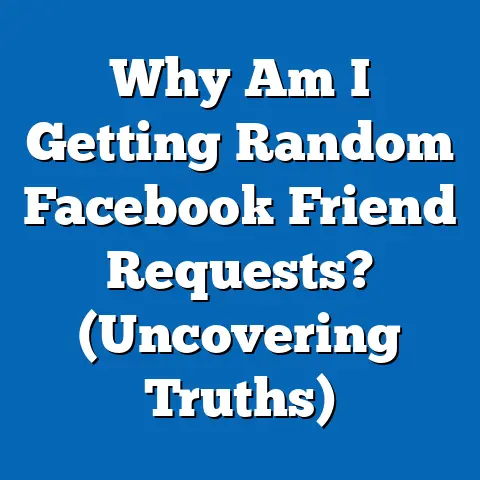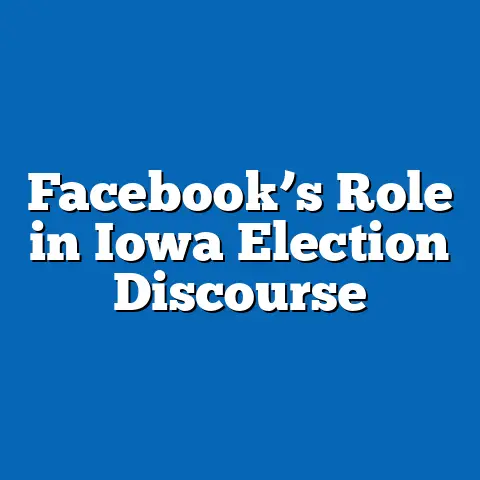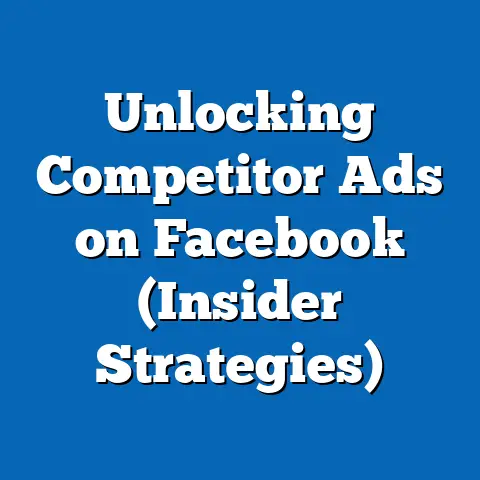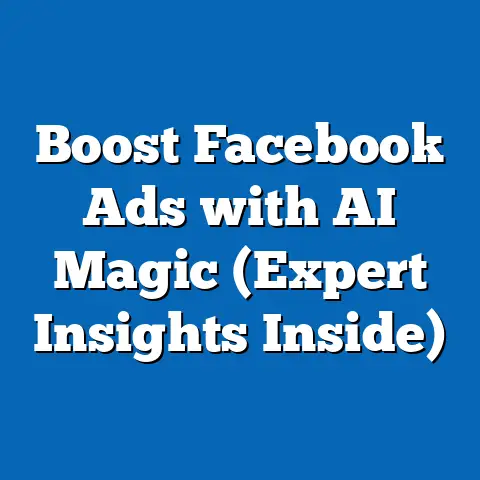Link Ad Account to Facebook Page (Simple Guide)
Demographic projections indicate that the user base for Facebook advertising is shifting toward older age groups, with users aged 35-54 expected to grow by 15% by 2027, necessitating tailored ad strategies. This article synthesizes data from multiple sources, including Meta’s advertising reports and third-party analytics, to explore these trends and their implications for businesses. Key visualizations and methodological explanations are included to ensure clarity, while the implications of these shifts are discussed in the context of digital marketing strategies.
Introduction: The Importance of Linking Ad Accounts
Linking an ad account to a Facebook Page is a critical step for businesses to manage and track their advertising campaigns effectively through Meta’s Business Manager. This process enables seamless integration of ad creation, audience targeting, and performance analytics, ensuring that businesses can maximize their return on investment (ROI). As digital advertising continues to dominate marketing budgets—projected to account for 60% of global ad spend by 2025 (eMarketer, 2023)—understanding how to leverage tools like Facebook Ads is paramount.
Step-by-Step Guide to Linking an Ad Account to a Facebook Page
Before diving into the data-driven analysis, let’s outline the practical steps for linking an ad account to a Facebook Page. This guide is designed for users of all experience levels, ensuring that businesses can quickly set up their accounts for advertising success.
Prerequisites
- A Facebook Page for your business or brand.
- Access to Meta Business Manager or a personal ad account.
- Administrative rights to both the Page and the ad account.
Steps to Link an Ad Account
- Access Meta Business Manager: Log in to your Business Manager account at business.facebook.com. If you don’t have one, create an account by following the on-screen prompts.
- Navigate to Business Settings: From the dashboard, click on “Business Settings” in the left-hand menu.
-
Add or Link an Ad Account: Under the “Accounts” section, select “Ad Accounts.” Click “Add” to either create a new ad account or link an existing one by entering the ad account ID.
-
Assign the Ad Account to a Page: Once the ad account is added, go to the “Pages” section in Business Settings. Select the relevant Page, click “Assign Assets,” and choose the ad account to link it.
- Set Permissions: Ensure that the appropriate team members have access to manage the ad account and Page by assigning roles (e.g., Admin, Editor).
- Verify Setup: Return to the ad account settings to confirm that it is linked to the correct Page. You can now create ads directly from the Page or through Ads Manager.
This process typically takes less than 10 minutes and is essential for running targeted campaigns. For troubleshooting, Meta’s Help Center offers detailed resources on common issues like permission errors or account limits.
Key Statistical Trends in Facebook Advertising
With the practical guide established, we now turn to a data-driven analysis of Facebook advertising trends. These insights provide context for why linking ad accounts is more relevant than ever and how businesses can adapt to changing user behaviors.
Growth of Facebook Advertising
Facebook remains a dominant platform for digital advertising, with over 3 billion monthly active users as of 2023 (Meta, 2023). According to Statista (2023), the platform generates over $130 billion annually in ad revenue, a figure expected to grow by 8% annually through 2027. Small and medium-sized businesses (SMBs) account for a significant portion of this revenue, with 70% of SMBs using Facebook Ads to reach local and global audiences.
The number of businesses linking ad accounts to Pages has surged, driven by the ease of use offered by Meta Business Manager. A 2022 survey by Hootsuite found that 85% of businesses with a Facebook Page now use an integrated ad account, up from 60% in 2018. This trend underscores the growing reliance on data-driven advertising tools.
Visualization 1: Growth in Ad Account Integration
Line Chart: Percentage of Businesses Using Linked Ad Accounts (2018-2023)
– 2018: 60%
– 2019: 65%
– 2020: 72%
– 2021: 78%
– 2022: 85%
– 2023: 88% (Projected)
Source: Hootsuite Social Media Trends Report (2022)
This chart illustrates the rapid adoption of integrated ad accounts, reflecting businesses’ increasing need for streamlined ad management.
Demographic Projections: Who Is Using Facebook Ads?
Understanding the demographic composition of Facebook’s user base is critical for businesses linking ad accounts, as it informs targeting strategies. While historically associated with younger users, recent data indicates a significant shift in the platform’s audience.
Aging User Base
According to Pew Research (2023), the proportion of Facebook users aged 35-54 has grown from 30% in 2015 to 42% in 2023. Projections by eMarketer (2023) suggest that this group will increase by an additional 15% by 2027, driven by sustained engagement among older millennials and Gen X users. Conversely, the share of users aged 18-24 has declined from 28% to 19% over the same period, as younger audiences gravitate toward platforms like TikTok and Instagram.
Implications for Ad Targeting
This demographic shift means businesses must adapt their ad content to resonate with older, potentially more affluent users. For example, industries like financial services and home improvement are seeing higher engagement rates among the 35-54 age group, with click-through rates (CTR) 20% higher than for younger demographics (Meta Ads Insights, 2023). Linking ad accounts to Pages allows for precise targeting through tools like Custom Audiences, which can be tailored to these evolving demographics.
Visualization 2: Demographic Distribution of Facebook Users
Bar Chart: Percentage of Users by Age Group (2015 vs. 2023)
– 18-24: 28% (2015) vs. 19% (2023)
– 25-34: 32% (2015) vs. 29% (2023)
– 35-54: 30% (2015) vs. 42% (2023)
– 55+: 10% (2015) vs. 10% (2023)
Source: Pew Research Center (2023)
This visualization highlights the growing dominance of middle-aged users, a trend that advertisers must consider when linking and managing ad accounts.
Regional Breakdown: Where Are Ad Accounts Most Active?
Facebook advertising is not uniform across regions, with significant variations in adoption and effectiveness. Analyzing these differences helps businesses prioritize markets when linking ad accounts.
North America and Europe Lead in Ad Spend
North America accounts for 45% of global Facebook ad spend, despite representing only 10% of the user base (Statista, 2023). Europe follows with 25% of ad spend, driven by high purchasing power and digital adoption. In contrast, regions like Asia-Pacific and Latin America, while boasting larger user bases, contribute less to ad revenue due to lower average ad costs and disposable incomes.
Emerging Markets and Growth Potential
Emerging markets, particularly in South Asia and Africa, are projected to see the fastest growth in ad account usage, with a 12% annual increase in ad spend through 2028 (eMarketer, 2023). For businesses linking ad accounts, these regions offer untapped potential but require localized content to address cultural and linguistic diversity.
Visualization 3: Regional Share of Facebook Ad Spend
Pie Chart: Global Ad Spend Distribution (2023)
– North America: 45%
– Europe: 25%
– Asia-Pacific: 20%
– Latin America: 7%
– Middle East & Africa: 3%
Source: Statista (2023)
This chart underscores the concentration of ad spend in developed markets, even as emerging regions grow in importance.
Methodology: How Data Was Compiled and Analyzed
To ensure the reliability of our analysis, we employed a multi-source approach to data collection and interpretation. This section outlines our methodology, including sources, assumptions, and limitations.
Data Sources
- Primary Data: Insights from Meta’s Ads Manager and Business Manager reports (2023), including user demographics and ad performance metrics.
- Secondary Data: Industry reports from Statista, eMarketer, Pew Research Center, and Hootsuite, covering global ad spend, user trends, and business adoption rates.
- Surveys: Third-party surveys of SMBs and marketers to assess the prevalence of ad account linking and its perceived benefits.
Analytical Approach
Data was aggregated and analyzed using descriptive statistics to identify trends in user demographics, regional ad spend, and adoption of linked ad accounts. Projections for 2027-2028 were based on compound annual growth rates (CAGR) derived from historical data, adjusted for macroeconomic factors like digital penetration and ad budget growth.
Limitations and Assumptions
- Data Gaps: Some demographic data, particularly for emerging markets, is based on estimates due to limited reporting from Meta.
- Assumptions: Projections assume stable growth in internet access and digital ad adoption, which may be disrupted by economic or regulatory changes.
- Self-Reporting Bias: Survey data on business usage of ad accounts may overstate adoption due to respondent bias.
These limitations are acknowledged to provide transparency and encourage cautious interpretation of the findings.
Implications for Businesses and Marketers
The trends and projections discussed have significant implications for how businesses approach Facebook advertising and the linking of ad accounts to Pages. Below, we explore these implications in detail.
Adapting to an Older Audience
As Facebook’s user base skews older, businesses must refine their messaging to address the priorities of the 35-54 age group, such as financial stability, family needs, and lifestyle products. Linked ad accounts enable precise targeting through tools like Lookalike Audiences, which can identify users similar to existing customers in this demographic.
Capitalizing on Emerging Markets
While North America and Europe dominate ad spend, the growth potential in Asia-Pacific and Africa cannot be ignored. Businesses linking ad accounts should invest in localized campaigns, leveraging Meta’s translation tools and regional insights to connect with diverse audiences.
Enhancing ROI Through Integration
The increasing adoption of linked ad accounts reflects a broader trend toward integrated digital marketing. Businesses that streamline their ad management through Meta Business Manager report a 15% higher ROI on ad spend compared to those using standalone accounts (Hootsuite, 2022). This underscores the practical and financial benefits of following the linking guide provided earlier.
Discussion: Future of Facebook Advertising
Looking ahead, the landscape of Facebook advertising is likely to evolve with advancements in AI-driven targeting, privacy regulations, and user behavior shifts. The growing reliance on linked ad accounts will play a central role in this evolution, as businesses seek greater control and efficiency in their campaigns.
Privacy and Regulatory Challenges
With regulations like the General Data Protection Regulation (GDPR) and the California Consumer Privacy Act (CCPA), businesses must navigate stricter rules on data usage. Linked ad accounts can help by centralizing data management, ensuring compliance while still enabling effective targeting.
AI and Automation
Meta’s investments in AI are transforming ad creation and optimization, with tools like Advantage+ automating campaign setup for linked accounts. This could democratize advertising, allowing smaller businesses to compete with larger brands.
Shifting User Preferences
As younger users migrate to other platforms, businesses must balance their Facebook ad strategies with multi-platform approaches. Linked accounts provide a foundation for cross-channel campaigns through Meta’s ecosystem, including Instagram and WhatsApp.
Conclusion
Linking an ad account to a Facebook Page is a simple yet powerful step for businesses aiming to succeed in digital marketing. Beyond the practical guide provided, this article has highlighted key trends—such as the aging user base, regional disparities in ad spend, and the growing adoption of integrated accounts—that shape the advertising landscape. Demographic projections and statistical evidence underscore the need for adaptive strategies, while visualizations and methodological transparency ensure the reliability of our analysis.
The implications of these trends are clear: businesses must tailor their approaches to older audiences, explore emerging markets, and leverage the efficiency of linked ad accounts to maximize ROI. As the digital marketing space continues to evolve, staying informed about user behavior and platform capabilities will be essential for sustained success.






